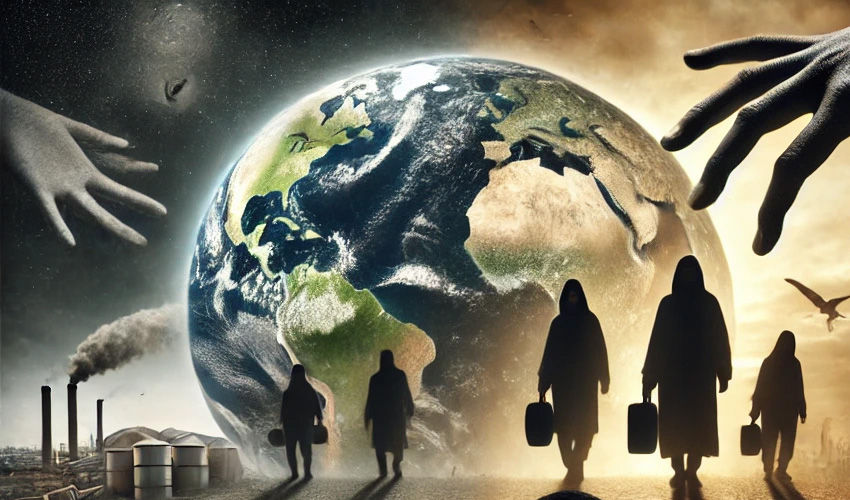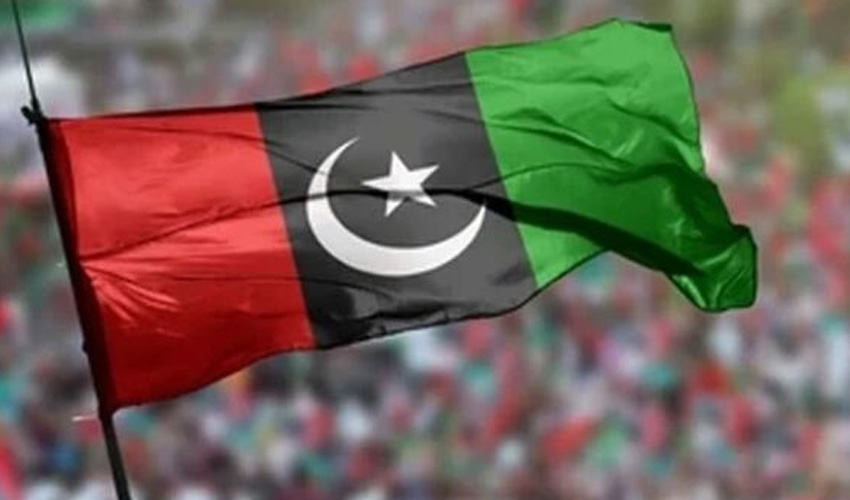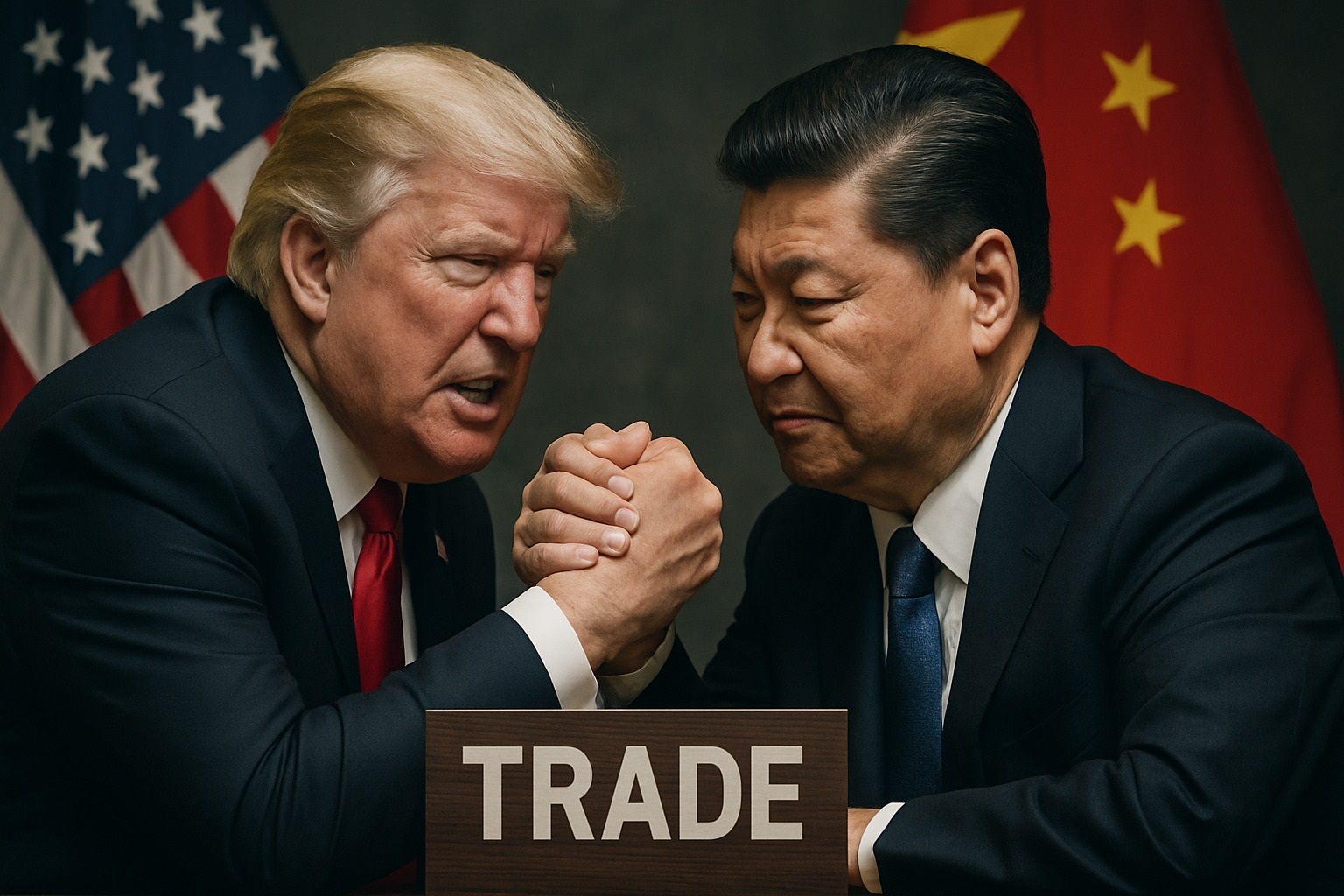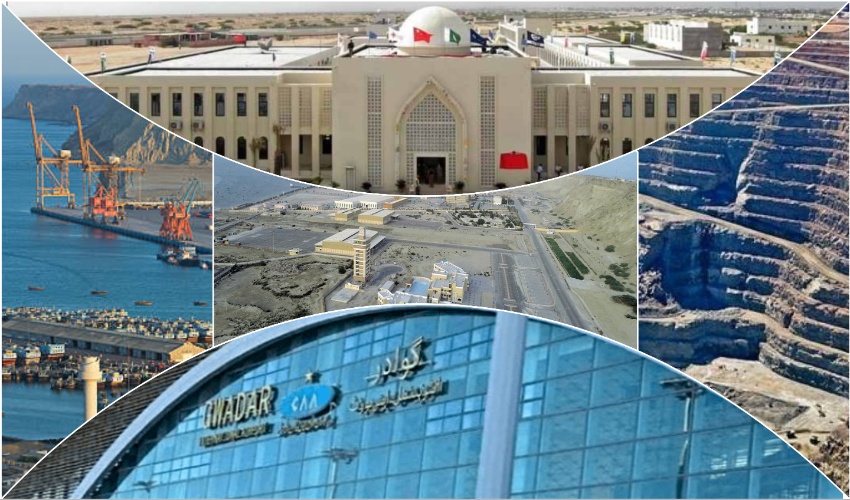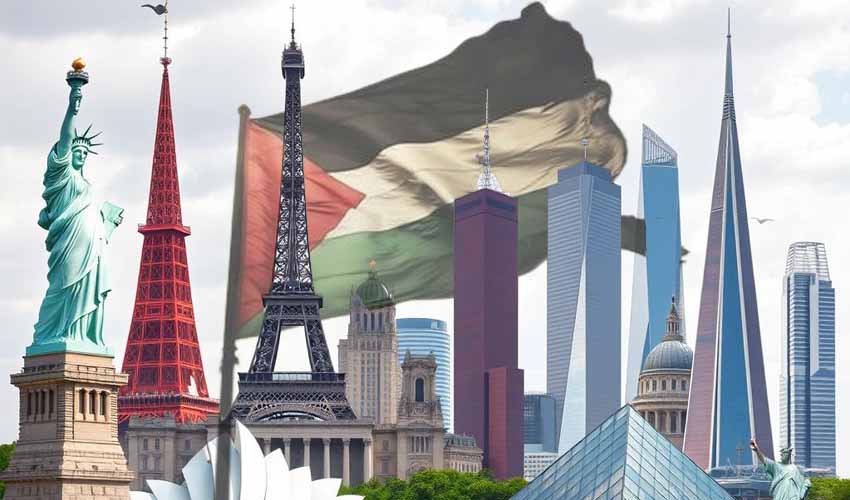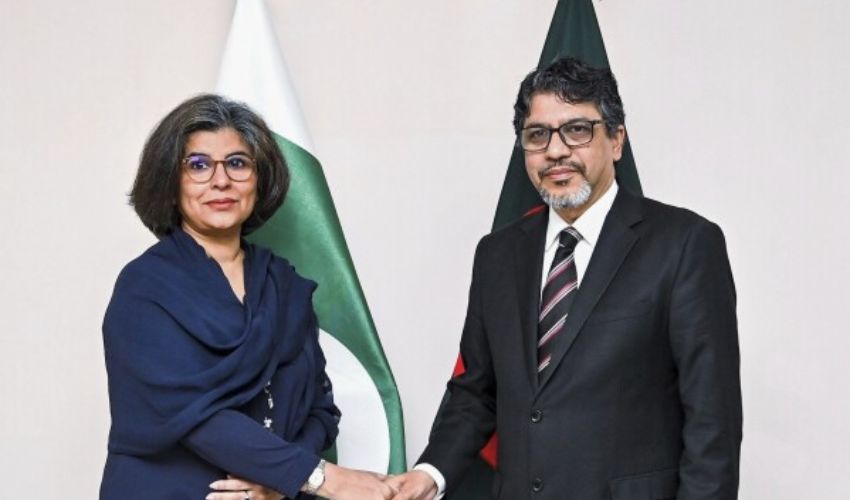In the heart of Pakistan, where lush green fields once flourished, the relentless march of climate change has left desolation in its wake. The eerie silence that follows a flood or drought is not just the absence of sound; it’s the echo of shattered livelihoods and broken dreams. As the country grapples with devastating natural disasters, another sinister issue looms large: human trafficking.
Climate change is not just an environmental crisis; it is a catalyst for exploitation, forcing vulnerable populations into the hands of traffickers and igniting a national emergency that demands urgent attention.
According to the Global Climate Risk Index, Pakistan ranks among the countries most vulnerable to climate change. The nation has witnessed an alarming increase in extreme weather events, from catastrophic floods to parching droughts. These shifts in climate do not just wreak havoc on the environment; they intensify social inequalities, exacerbate resource scarcity, and plunge communities deeper into poverty.
The UN Office on Drugs and Crime (UNODC) has recognised a grim reality: climate-induced migration makes communities more susceptible to trafficking. Traffickers, lurking like vultures, prey on those rendered vulnerable by climate disasters. Families who have lost their homes and livelihoods often find themselves with no choice but to seek help from strangers, inadvertently placing themselves at risk of forced labor, sexual exploitation, and other forms of modern slavery.
Take, for instance, the experiences of communities in South Punjab and Chitral. The 2010 floods devastated South Punjab, forcing families into a dire cycle of poverty and vulnerability. With crops destroyed and incomes diminished, many families fell into the traps of debt bondage and forced labor. Similarly, the 2019 glacial lake outburst floods (GLOFs) damaged critical infrastructure, leading impoverished families to marry off their daughters to wealthy outsiders as a desperate means of survival.
These disheartening narratives underscore the complex interplay between climate-induced vulnerabilities and the exploitation of human lives. Unfortunately, the relationship between climate change and human trafficking remains understudied and often overlooked in Pakistan. While governmental agencies focus on quantifying economic losses and physical destruction from climate events, the human security implications, particularly trafficking, are frequently ignored.
The U.S. State Department's 2023 Trafficking in Persons Report highlights that around 35,309 victims of trafficking were identified in Pakistan. However, this figure is likely just the tip of the iceberg, as many cases remain undetected due to inadequate reporting mechanisms. The Global Slavery Index estimates that about 2.3 million people are victims of modern slavery in Pakistan, raising alarming questions about the true scale of the problem.
Determining the number of individuals falling prey to trafficking due to climate events poses a challenge. However, studies indicate that climate migrants, often thrust to society's margins, are three times more vulnerable to trafficking. Organizations like the International Organization for Migration are beginning to explore climate-induced migration, but the connection to trafficking demands deeper analysis and targeted interventions.
The Pakistani government’s approach to combatting human trafficking, led by the Federal Investigation Agency (FIA), has shown limited success in addressing the issue. Human trafficking occurs primarily at local levels, making district administrations and local police departments crucial in prevention, prosecution, and victim protection.
Currently, district police departments are underutilized in efforts against human trafficking, particularly in areas affected by climate-related calamities. Their responsibilities often focus solely on prosecuting traffickers, neglecting their potential role in preventive measures. By virtue of their grassroots presence, these departments are ideally positioned to spearhead initiatives through awareness campaigns, community engagement, and vigilant oversight.
One effective starting point could be registering and documenting laborers in vulnerable sectors—such as brick kilns, local factories, and farms in disaster-hit regions. This strategy would facilitate monitoring working conditions and help ensure that workers are not subjected to unlawful practices. Police Khidmat Marakiz or Police Service Centers, given their extensive national reach, can play an integral role in this process.
These centers have already laid the foundation for more inclusive law enforcement by offering accessible and community-oriented services. Expanding the services at these centers to specifically address issues like forced labor, child labor, and forced begging could significantly enhance the safety of the most vulnerable communities. By focusing on these issues, the centers could provide essential support to those at risk of climate-induced exploitation while also acting as a bridge between various government departments engaged in anti-trafficking and disaster relief efforts.
The recently established organized crime units in Punjab could also broaden their mandate to include human trafficking. This strategic enhancement would empower these units to effectively identify and disrupt the operations of organized gangs involved in both human trafficking and smuggling. Additionally, strengthening District Anti-Trafficking and Anti-Bonded Labour Monitoring Committees is vital. These committees can adopt a contextual approach tailored to the nature of the climate events or natural disasters affecting communities, leading to more effective outcomes.
As Pakistan continues to face the dual threats of climate change and human trafficking, it is imperative for local law enforcement, community organizations, and government departments to collaborate and take decisive action. Raising awareness about climate-induced vulnerabilities and the associated risks of trafficking is crucial. Education campaigns can empower communities, enabling them to recognize the warning signs of trafficking and seek help.
Strengthening legal frameworks, improving detection and reporting mechanisms, and providing adequate resources for law enforcement agencies are all essential steps in the fight against human trafficking. Furthermore, fostering international cooperation and sharing best practices with countries facing similar challenges can amplify efforts to combat this pressing issue.





